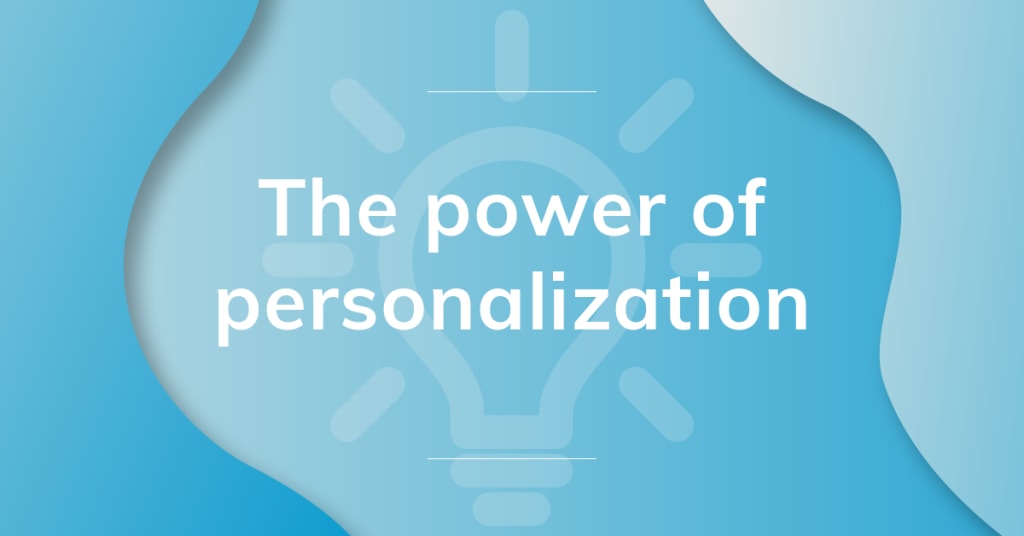The Power of Personalization: How to Customize Your Marketing Strategy
In today's fast-paced digital world, personalization has become a powerful tool for businesses to connect with their customers and create a memorable brand experience. With so many choices available to consumers, personalization can help businesses stand out and create a loyal customer base. In this article, we will discuss the power of personalization and how to customize your marketing strategy to meet the needs and preferences of your customers.

In today's fast-paced digital world, personalization has become a powerful tool for businesses to connect with their customers and create a memorable brand experience. With so many choices available to consumers, personalization can help businesses stand out and create a loyal customer base. In this article, we will discuss the power of personalization and how to customize your marketing strategy to meet the needs and preferences of your customers.
What is Personalization?
Personalization is the process of tailoring your marketing and customer experiences to meet the specific needs and preferences of your customers. This can be done in a variety of ways, including through personalized content, personalized promotions, and personalized recommendations.
Why is Personalization Important?
Personalization is important because it helps businesses create a more meaningful connection with their customers. By understanding the unique needs and preferences of each customer, businesses can create a customized experience that resonates with them and helps build brand loyalty. Personalization can also help businesses stand out in a crowded marketplace, increase customer engagement, and ultimately drive more sales and revenue.
How to Customize Your Marketing Strategy?
There are several strategies that businesses can use to customize their marketing strategy and create a more personalized experience for their customers. Here are a few key examples:
1. Collect Data
The first step in creating a personalized marketing strategy is to collect data on your customers. This can include demographic information, past purchase history, browsing behavior, and social media activity. By collecting this data, you can gain insights into what your customers like and dislike, which can help you create targeted marketing campaigns.
2. Use Personalized Content
Personalized content is a powerful way to connect with your customers and make them feel valued. This can include personalized emails, personalized landing pages, and personalized product recommendations. By tailoring your content to the specific needs and preferences of each customer, you can create a more engaging and relevant experience.
3. Leverage Social Media
Social media is a great way to connect with your customers and create a personalized experience. By engaging with your customers on social media, you can respond to their comments and messages, share personalized content, and create a sense of community around your brand.
4. Offer Personalized Promotions
Personalized promotions are a great way to incentivize customers to make a purchase. This can include personalized discounts, free shipping offers, and exclusive deals based on their purchase history or browsing behavior.
5. Use Chatbots
Chatbots are a powerful tool for creating a personalized experience for your customers. By using chatbots, you can answer customer questions, provide personalized recommendations, and offer support 24/7.
Examples of Personalization in Action
Here are a few examples of businesses that have successfully implemented personalization into their marketing strategy:
1. Amazon: Amazon is known for its personalized shopping experience, which is based on the customer's browsing and purchase history. Amazon uses this data to create personalized product recommendations and targeted advertising campaigns.
2. Netflix : Netflix uses data on a customer's viewing history to create personalized recommendations for TV shows and movies. This helps customers find new content that they are likely to enjoy and keeps them engaged with the platform.
3. Spotify : Spotify creates personalized playlists for its users based on their listening history and preferences. This helps customers discover new music and creates a more engaging and personalized experience.
In conclusion, personalization is a powerful tool for businesses to create a customized experience for their customers and stand out in a crowded marketplace. By collecting data, using personalized content, leveraging social media, offering personalized promotions, and using chatbots, businesses can create a personalized experience that resonates with their customers and helps build brand loyalty. With the right strategies and a customer-centric approach, businesses can harness the power of personalization to drive long-term growth and success.
About the Creator
VIVEK SINGH
Audience-oriented Content Creator | | Engineer, Trader & Investor | | Tech, Finance, Business, and Online Marketing | |
Enjoyed the story? Support the Creator.
Subscribe for free to receive all their stories in your feed. You could also pledge your support or give them a one-off tip, letting them know you appreciate their work.






Comments
There are no comments for this story
Be the first to respond and start the conversation.